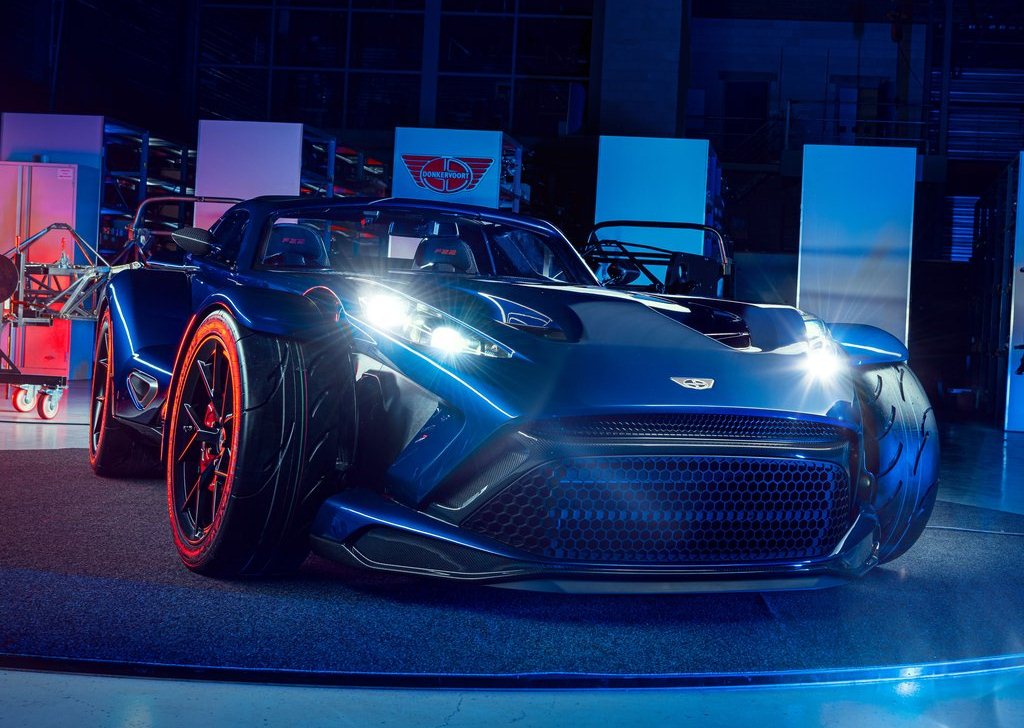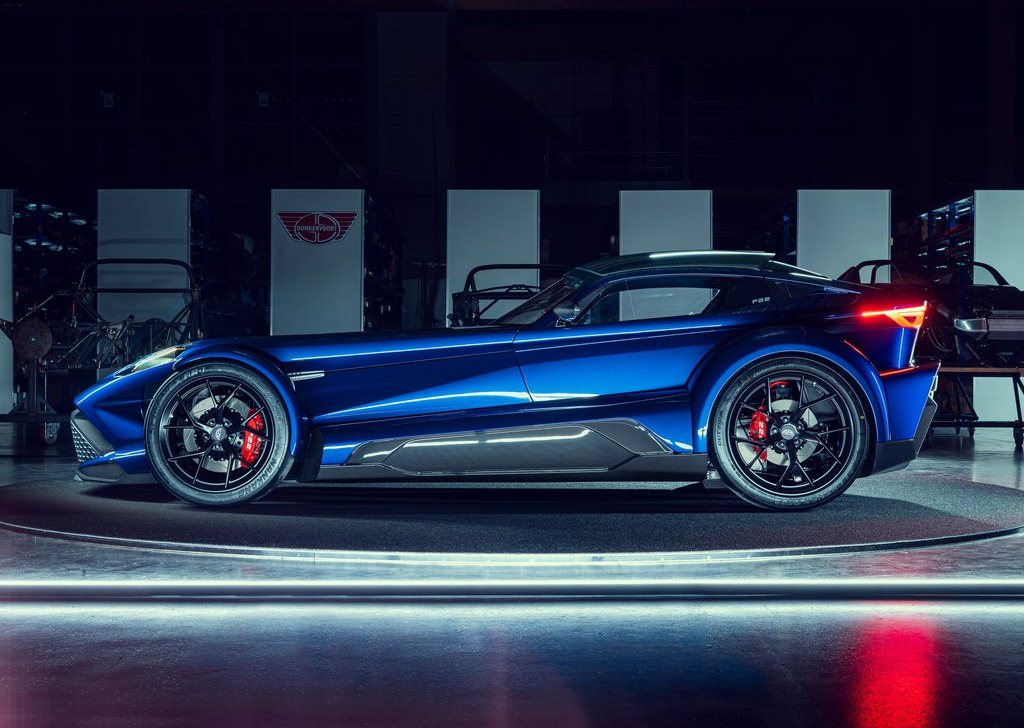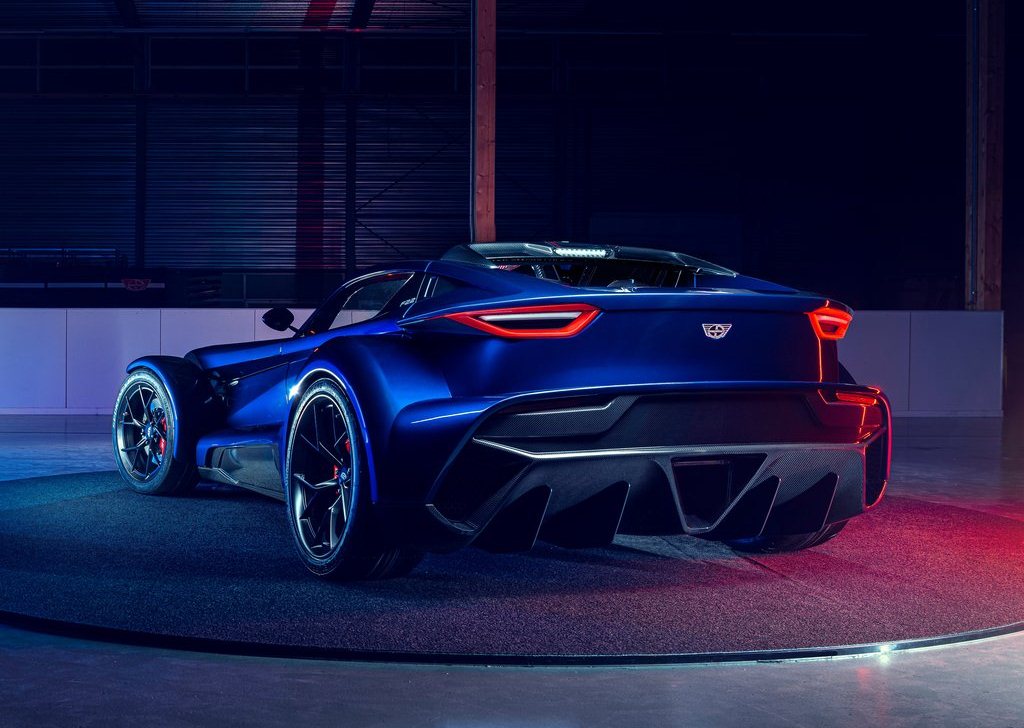Under the direction of second-generation Managing Director Denis Donkervoort, the family-owned Dutch boutique brand has created a supercar that breaks new ground in every area, from construction to design. With 500 horsepower from its five-cylinder turbo motor and weighing just 750kg, the innovative Donkervoort F22 combines stunning design, sheer speed, handling purity and everyday usability while retaining links to Donkervoort's historic open-wheel layout. Donkervoort has redefined driving purity by doubling the F22's torsional and bending rigidity (compared to the outgoing D8 GTO Individual Series), thanks to a hybrid chassis construction of thin-wall steel tube and Ex-Core carbon-fibre chassis construction.
The F22 supercar is capable of hitting 2.15G of lateral acceleration while remaining the lightest road- registered, two-seat supercar in the world. The Donkervoort F22 became the first Donkervoort to be sold out based on design sketches alone before the car was even seen. Donkervoort Ambassador program members snapped up the entire planned 50-unit production run, forcing the Donkervoort to extend production to 75 cars. The F22 is the first new model since Denis Donkervoort took over as the company's driving force after his father's retirement, Donkervoort Automobielen founder Joop Donkervoort, early in 2021 and marks the end of the D8 GTO era. An accomplished racer as well as Donkervoort's Managing Director, Denis Donkervoort's engineering brief called for even more track pace, greater comfort, ease of use at the limit and more practicality based on a safer, stronger car wrapped up in a revolutionary design.
Powertrain and performance
The heart of the Donkervoort F22 powertrain is the front mid-engined five-cylinder turbocharged engine. The in-line engine was originally built by Audi Sport, and Donkervoort engineers have tuned it for even more power, torque and low-end drivability. It boasts 500 horsepower - in a machine weighing just 750kg. The F22 development had an extreme obsession with weight reduction - even by Donkervoort standards - as the car grew physically larger to accommodate owner requests and legislation from three continents.
The potent engine was one of the key advantages in the weight-saving campaign, with Donkervoort avoiding hybrid and electric powertrains and the hundreds of kilograms they would have added. Donkervoort also proved that the 2.5-litre engine still had more efficiency, even with a boost in power. The F22 has a homologated WLTP combined emissions figure of 163 grams of CO2 per kilometre - 28 fewer than its 695kg predecessor. The five-cylinder engine's bore and stroke are unchanged, and it runs a 10.0:1 compression ratio to deliver a mountain of torque from very low in the rev range. The enormous torque from low revs, combined with the car's ultra-lightweight, means the F22 can utilise the size and weight efficiencies of the five-speed gearbox.
Chassis engineering
While the Donkervoort D8 GTO-JD70 was the first supercar to cross the 2G cornering threshold, the sophistication of the F22's all-new chassis takes extreme grip even further to 2.15g. But, critically, the F22 adds an entirely new dimension of day-to-day liveability and versatility when it is not driven to the outer limits of its abilities.
The chassis is a hybrid of tubular steel and a generous serving of Donkervoort's renowned carbon-fibre abilities, including the liberal use of the breakthrough Ex-Core carbon sandwich system. The result is a body-in-white with a 100-percent boost in torsional and bending rigidity over the outgoing D8 GTO Individual Series and commensurate increases in both active and passive safety. This ultra-stiff core chassis delivers a quantum leap in handling and suspension accuracy while remaining ultra-light.
Safety
The Donkervoort F22's safety integrity has moved the game on for ultra-lightweight supercars, both its active and passive safety. With torsional rigidity rising from 20,000Nm/degree to 40,000 and bending stiffness doubling, the F22 provides a rock-solid platform for all the evasive moves a driver might need to take in an emergency. The symmetrical design also uses the side-exiting exhaust pipe as a crash box for side-impact protection on the left side, adding strength to the Ex-Core side rails.
The F22 also integrates the ultra-strong Ex-Core sandwich-construction, carbon-fibre segments with tube-steel sections in a hybrid chassis construction. Ex-Core is a Donkervoort innovation that has been spun off into its own stand-alone company, and it is used by everything for Formula One, other hypercar brands and even ocean-racing yachts. Ex-Core can even create zero-radius creases in carbon-fibre by lining the inside of carbon fibre sheets with a foam that expands with heat, so it pushes the carbon fibre layers out into the corners of the mould. The foam then solidifies, remaining inside the carbon-fibre parts to add strength and durability while reducing vibrations.


















![2026 Kia Sportage [EU] Review: A Refined European Crossover with Bold Style and Electrified Options](https://blogger.googleusercontent.com/img/b/R29vZ2xl/AVvXsEgqMRwJE1m90uCMgRSB6oc4bAzmAaKXJlNoCwavK5fXHaphLYY1sUVXdxUC94zuj95CdjDG2SqRnUBYMqta-dapTLIaHhzEdJAS821ldVMQOKfAZNpQlZ5fYTwKzKbKj8ad9QeKlaQPcNLRZ6zaGvuXhsg1kQ6zQCQqYtjmOM8q9u-a7Nl3WYjp773OLXJR/w680/2026%20Kia%20Sportage%20%5BEU%5D_01.jpg)


0 Comments